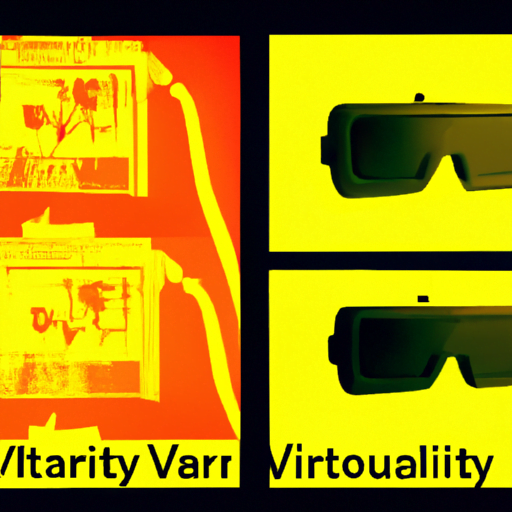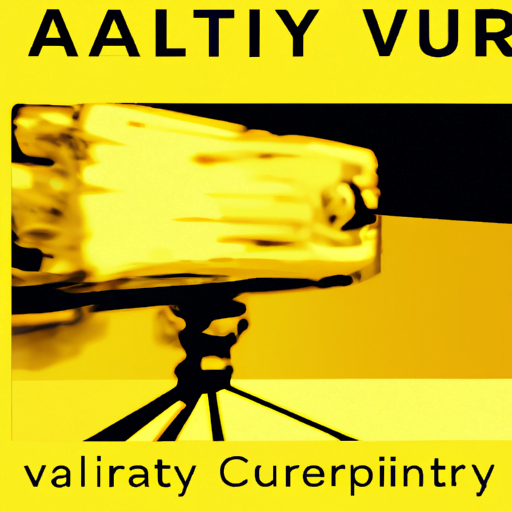
-
Table of Contents
- Designing for Virtual Reality (VR) Interfaces
- The Unique Challenges of VR Interface Design
- Best Practices for VR Interface Design
- 1. Prioritize User Experience
- 2. Optimize Performance
- 3. Design for Comfort
- 4. Use Visual Cues and Feedback
- 5. Iterate and Test
- Case Studies: Successful VR Interface Designs
- 1. Oculus Home
- 2. Tilt Brush
- Conclusion
Designing for Virtual Reality (VR) Interfaces

Virtual Reality (VR) has emerged as a transformative technology that has the potential to revolutionize various industries, including gaming, entertainment, education, and healthcare. As VR becomes more accessible and widespread, the importance of designing effective and user-friendly VR interfaces becomes paramount. In this article, we will explore the key considerations and best practices for designing VR interfaces that provide immersive and intuitive experiences for users.
The Unique Challenges of VR Interface Design
Designing for VR interfaces presents unique challenges compared to traditional 2D interfaces. In VR, users are fully immersed in a virtual environment, which requires a different approach to interaction and user experience design. Here are some of the key challenges that designers face when creating VR interfaces:
- Presence and immersion: VR aims to create a sense of presence and immersion for users. Designers must carefully consider how to design interfaces that enhance this feeling and make users feel fully engaged in the virtual world.
- Interaction: Traditional input methods like keyboards and mice are not suitable for VR. Designers need to explore new ways of interaction, such as hand gestures, motion controllers, and even eye tracking, to provide intuitive and natural interactions in the virtual environment.
- Comfort: VR experiences can cause discomfort or motion sickness if not designed properly. Designers must consider factors like frame rate, field of view, and motion to ensure a comfortable and enjoyable experience for users.
- Visual hierarchy: In VR, users can freely look around and explore the virtual environment. Designers need to carefully consider how to guide users’ attention and create a clear visual hierarchy to convey important information effectively.
Best Practices for VR Interface Design
Now that we understand the unique challenges of VR interface design, let’s explore some best practices that can help designers create compelling and user-friendly VR interfaces:
1. Prioritize User Experience
When designing VR interfaces, the user experience should be at the forefront of the design process. Consider the following:
- Understand the target audience and their goals within the virtual environment.
- Design intuitive and natural interactions that align with users’ expectations.
- Provide clear instructions and guidance to help users navigate the virtual environment.
- Test and iterate on the design to gather user feedback and improve the overall experience.
2. Optimize Performance
Performance is crucial in VR to ensure a smooth and comfortable experience. Consider the following performance optimization techniques:
- Optimize the frame rate to maintain a consistent and high-quality visual experience.
- Minimize latency to reduce the delay between user actions and system response.
- Optimize the use of system resources to ensure smooth performance on different VR platforms.
3. Design for Comfort
Comfort is essential in VR to prevent motion sickness and discomfort. Consider the following comfort-oriented design principles:
- Provide a comfortable field of view to avoid straining users’ eyes.
- Avoid sudden camera movements or rapid changes in the virtual environment.
- Allow users to customize settings like movement speed or visual effects to accommodate individual preferences.
4. Use Visual Cues and Feedback
In VR, visual cues and feedback play a crucial role in guiding users and providing information. Consider the following techniques:
- Use color, size, and position to create a clear visual hierarchy and highlight important elements.
- Provide visual feedback for user actions to create a sense of responsiveness and interactivity.
- Use animations and transitions to convey changes in the virtual environment and provide context to users.
5. Iterate and Test
Designing for VR interfaces requires iterative design and continuous testing. Consider the following practices:
- Prototype and test the interface early in the design process to gather user feedback and identify usability issues.
- Iterate on the design based on user feedback and observations to improve the overall experience.
- Conduct user testing in realistic VR environments to simulate real-world usage scenarios.
Case Studies: Successful VR Interface Designs
Let’s take a look at some successful VR interface designs that have effectively addressed the unique challenges of VR:
1. Oculus Home
Oculus Home, the interface for the Oculus Rift VR headset, provides a seamless and intuitive experience for users. It features a virtual living room where users can access their VR games and applications. The interface uses clear visual cues and feedback to guide users and create a sense of presence. The design also allows users to customize their virtual environment, providing a personalized and immersive experience.
2. Tilt Brush
Tilt Brush, a popular VR painting application, offers a unique and intuitive interface for creating art in virtual reality. The interface uses hand gestures and motion controllers to simulate the experience of painting in 3D space. Tilt Brush provides visual feedback for brush strokes and allows users to easily switch between different brushes and colors. The interface design enables users to unleash their creativity in a natural and immersive way.
Conclusion
Designing for VR interfaces requires a deep understanding of the unique challenges and considerations that come with creating immersive and intuitive experiences. By prioritizing user experience, optimizing performance, designing for comfort, using visual cues and feedback, and iterating through testing, designers can create compelling VR interfaces that enhance the overall virtual reality experience. As VR continues to evolve and become more prevalent, the importance of effective interface design will only grow, shaping the future of this transformative technology.
